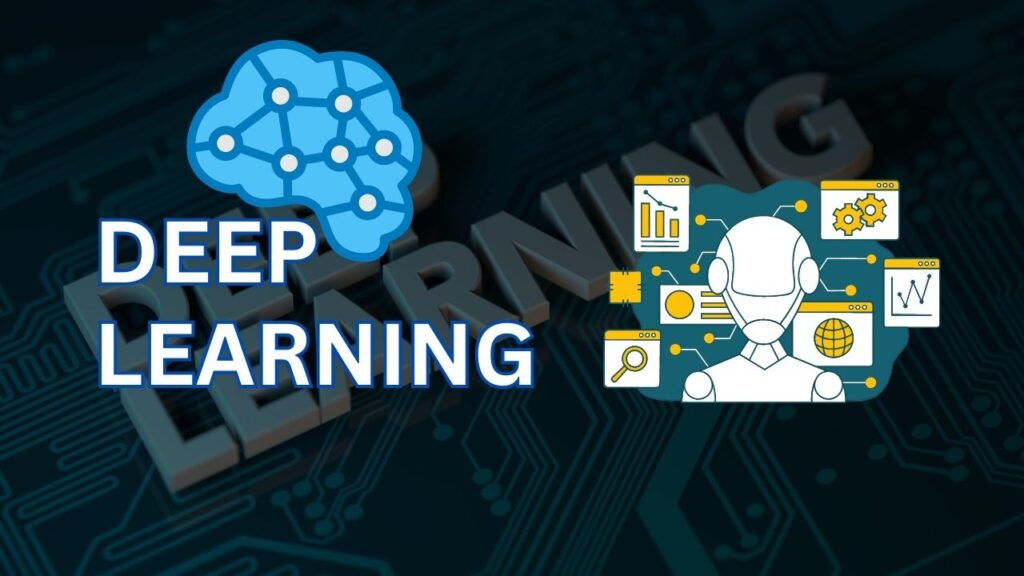Deep learning is a subfield of machine learning that has gained significant attention and popularity in recent years. From self-driving cars to voice assistants, deep learning algorithms are at the forefront of many groundbreaking innovations.
But what exactly is deep learning? How does it differ from traditional machine-learning approaches? In this article, we will delve into the world of deep learning, exploring its fundamental concepts, applications, and potential impact on various industries.

Table of Contents
What is Deep Learning?
Deep learning is a subset of machine learning, which in turn is a branch of artificial intelligence (AI). You can think of it like a Russian nesting doll where AI is the biggest doll, inside of which resides machine learning, and tucked inside that is our star of the day, deep learning.
At its core, deep learning is a type of machine learning that mimics the workings of the human brain in processing data for use in decision-making. Deep learning models use what are known as artificial neural networks with several layers (hence the term “deep”) to carry out these complex processes. These networks can learn and improve on their own by examining and comparing examples, a process that feels almost magical when you think about it!
How Deep Learning Works
Deep learning is a bit like teaching a toddler how to recognize animals. You show them pictures of dogs, cats, birds, and other animals over time. Eventually, they start recognizing and distinguishing the animals. They might mistake a cat for a tiger initially (hey, they’re not wrong!), but with time, their understanding becomes more nuanced and accurate.
Deep learning models function in a similar fashion. They are fed vast amounts of data and taught what the output should be. This process is known as training. The ‘deep’ in deep learning refers to the number of layers through which the data is transformed.
Each layer of nodes trains on a distinct set of features based on the previous layer’s output. Through each layer, the model learns to refine its understanding of the data.
Just like a kid becoming a pro at telling apart a cat from a dog, each layer helps the model get better and sharper at understanding the data.
Deep Learning Applications
From voice assistants like Alexa and Siri to self-driving cars, deep learning is becoming ubiquitous in our daily lives, often without us realizing it. It’s the hidden hero behind many technologies we now take for granted.
The Voice of Assistance
Those handy voice assistants that we rely on every day? Alexa, Siri, Google Assistant? Their ability to understand and respond to our voice commands is all thanks to deep learning. It’s deep learning that helps these virtual assistants process speech, understand context, and generate human-like responses. So next time Siri gives you the perfect playlist or Alexa dims your lights just right, you know who to thank!
Self-Driving Cars: The Future of Transportation
Deep learning is also the driving force (pun intended!) behind autonomous vehicles. It’s what enables these futuristic cars to recognize traffic signs, detect pedestrians, and make safe navigation decisions. By constantly analyzing real-time data from various sensors and cameras, these cars are able to understand and respond to complex driving environments. The road to a driverless future is being paved by deep learning.
Revolutionizing Healthcare
In the healthcare sector, deep learning is playing a crucial role in diagnosis and disease prevention. It’s helping doctors analyze medical images with increased accuracy, enabling early detection of diseases like cancer. It can also predict a patient’s risk factors for various conditions, helping to tailor personalized treatment plans. The impact of deep learning on healthcare is profound and potentially life-saving.
Financial Fraud? Not on Deep Learning’s Watch!
The finance sector too is benefiting from deep learning. Algorithms powered by deep learning can analyze thousands of transactions in real-time and detect any anomalies that might indicate fraudulent activity. It’s also automating trading by analyzing market patterns and making predictive models, helping investors make informed decisions.
Social Media: More than Just ‘Likes’ and ‘Shares’
And let’s not forget social media! Deep learning powers the recommendation systems that suggest what you should watch next on YouTube or what you might like on Instagram. It’s what makes facial recognition and photo tagging possible on Facebook. And ad targeting? Yep, you guessed it, that’s deep learning too, helping businesses find their ideal audiences.
Deep Learning vs. Machine Learning
When we talk about deep learning and machine learning, it’s easy to get them mixed up. While both are subsets of artificial intelligence, they are different in their capabilities and how they function.
To better understand the differences, let’s break it down into a list:
- Level of Task Complexity:
- Machine Learning: Handles tasks ranging from simple to moderately complex, akin to a toolbox with a variety of tools for different tasks.
- Deep Learning: Excels at highly complex tasks such as image recognition or speech-to-text conversion, much like a powerful drill breaking through tough surfaces.
- Learning and Improvement:
- Machine Learning: Models improve over time with training, but they often rely on guidance (i.e., provided labels) to learn correctly.
- Deep Learning: Models not only learn from their training, they also continuously improve and refine their knowledge autonomously, akin to a self-learning robot!
- Data Requirements:
- Machine Learning: Performs well with relatively small or medium-sized datasets.
- Deep Learning: The more data, the merrier! It thrives in environments with vast amounts of data.
- Computational Power:
- Machine Learning: Requires moderate computational resources for most models.
- Deep Learning: Needs high-end hardware (like GPUs) due to its complex computational needs.
- Problem-Solving:
- Machine Learning: Great for problems where a solution can be reached with logic and predefined rules.
- Deep Learning: Excels at solving problems that require nuanced understanding and pattern recognition, much like the way humans do.




